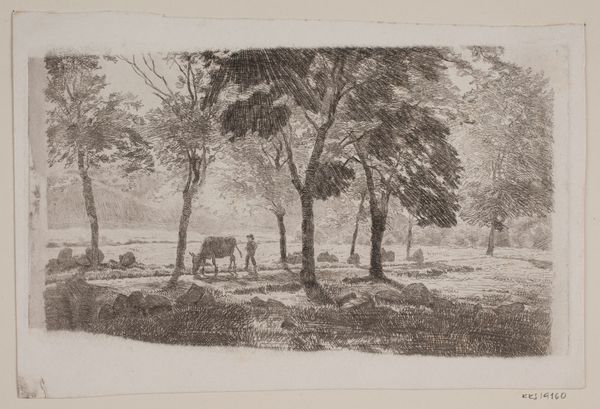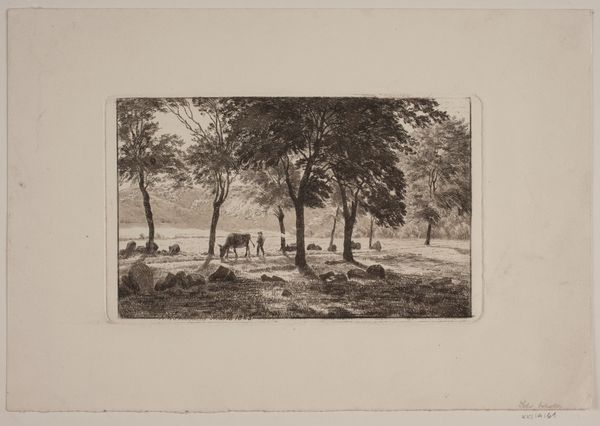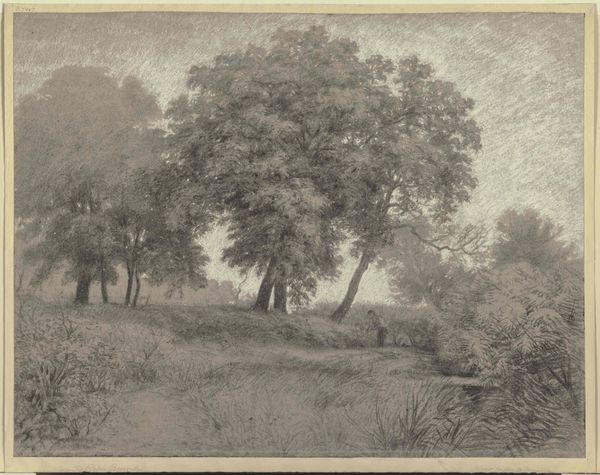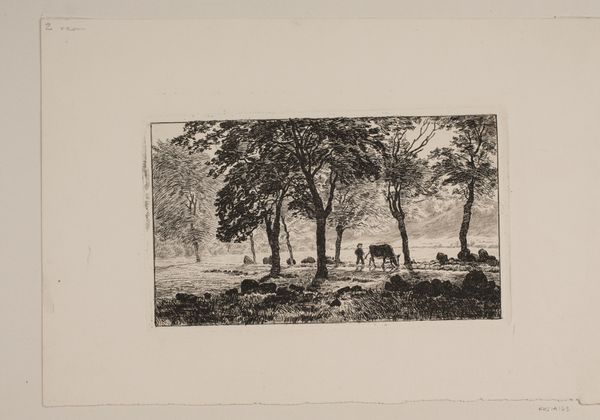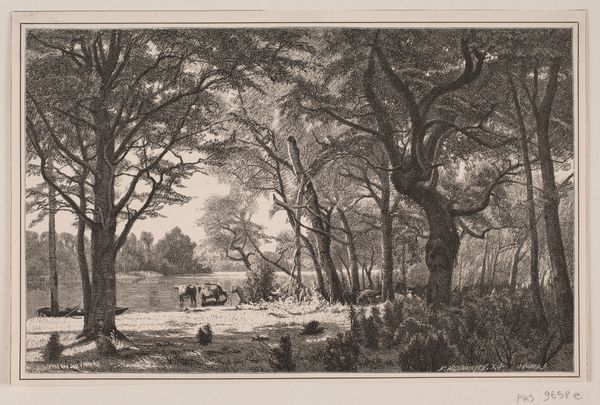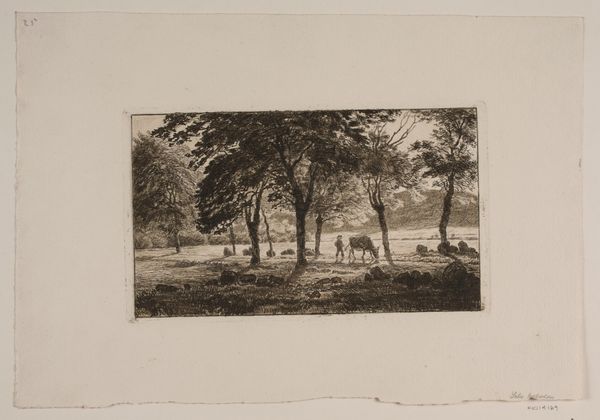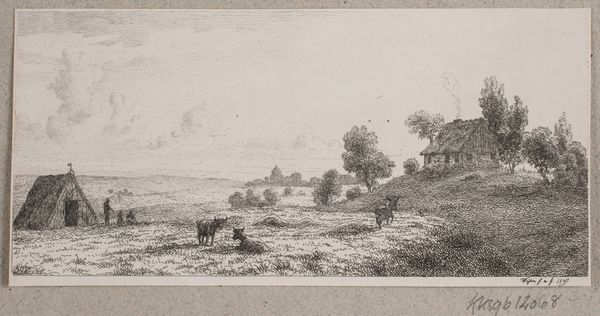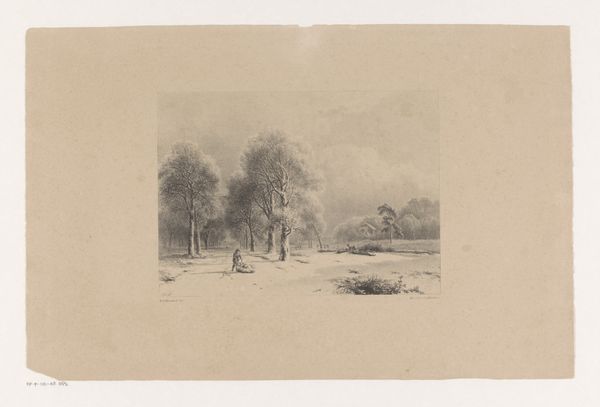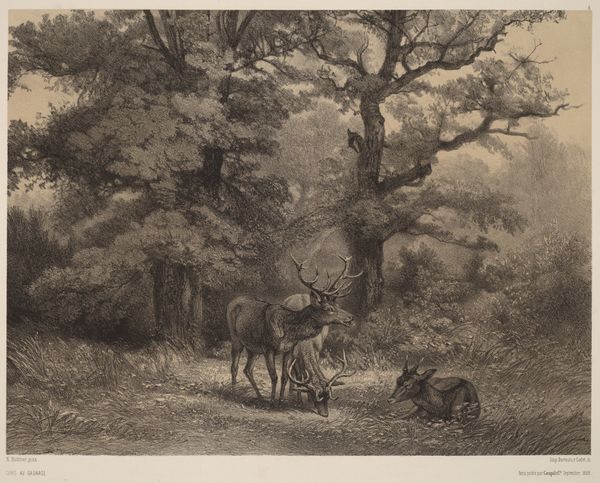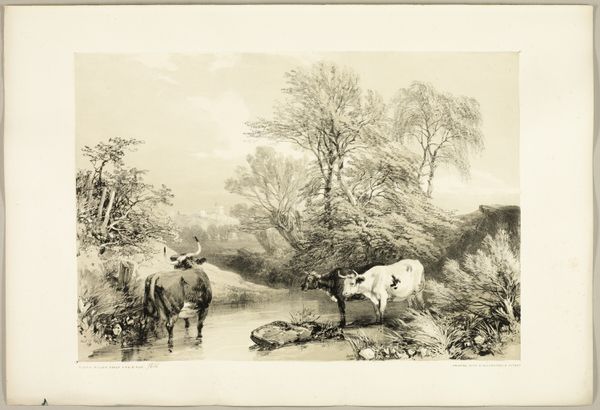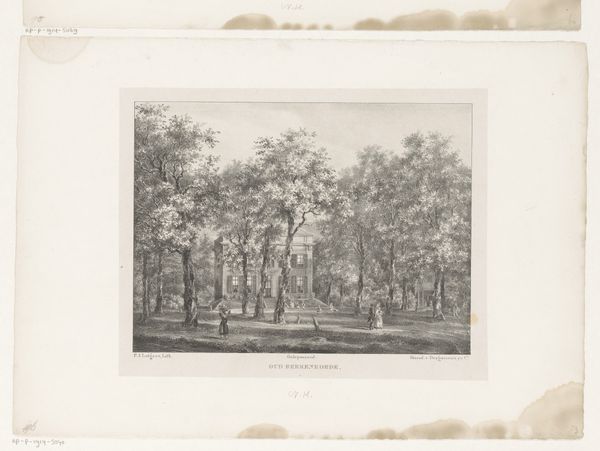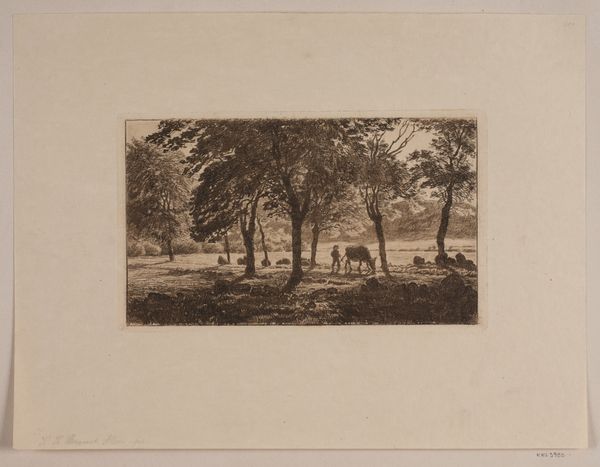
print, etching
# print
#
impressionism
#
etching
#
landscape
#
realism
Dimensions: 125 mm (height) x 208 mm (width) (Plademål)
Curator: The artwork before us is an etching titled "Landskab," or "Landscape," created by Niels Skovgaard in 1883. It resides at the SMK, the National Gallery of Denmark. What strikes you immediately? Editor: There’s a stillness to it, almost melancholic. The muted tones contribute to that mood, a stark black-and-white palette despite depicting a natural setting. It’s not romantic in a grand way but more focused on the intimate labor between humans and animals in nature. Curator: Yes, I feel that too. The pastoral setting holds particular meaning. In the 19th century, landscapes were increasingly used to express national identity and a connection to the land. Skovgaard was known for his depictions of the Danish countryside, infusing them with symbolic weight related to Danish folklore and cultural values. Editor: I notice the lone figure with the cow, and that composition places them within a specific power dynamic between nature and control. Also, what about the rocks and trees that create frames within frames? They call attention to the romantic idea that humans were dwarfed by nature, a sentiment in much landscape art across Europe during the time. What narratives about Danish life did this imagery promote in 1883? Curator: The scene likely represented the idealized, hardworking, rural life valued at that time. Though Skovgaard painted and etched various works, the themes and figures portrayed stay rather consistent, suggesting he likely held a deeply-felt ideological meaning with the cultural memories and history surrounding the land. Editor: Interesting that you frame that consistency in this body of work as representing continuity and not—dare I say— artistic constraint. Is that the symbolic thread between identity, place, and national narrative? Curator: It could be seen both ways. What's undeniable is the artwork’s ability to distill a complex cultural relationship into a seemingly simple image, a connection to a time and values long past. Editor: I suppose, reflecting upon it now, that initial sense of melancholy came from realizing how removed we are today from this imagined rural simplicity, a nostalgia perhaps intentionally manufactured. Curator: Well, seeing it, perhaps we’re both still seeking continuity somewhere, between us and the figures long past.
Comments
No comments
Be the first to comment and join the conversation on the ultimate creative platform.
